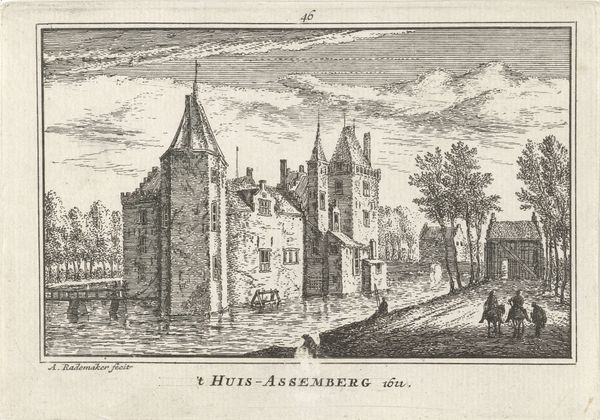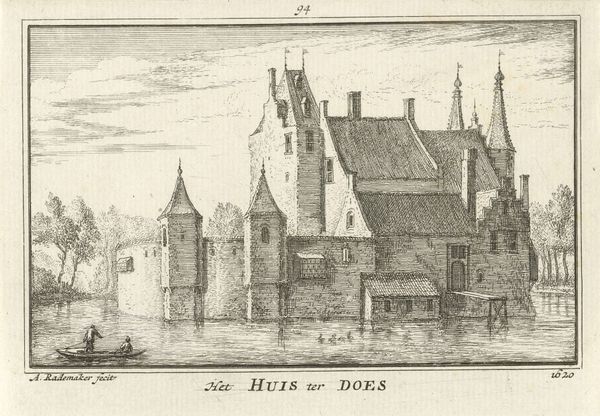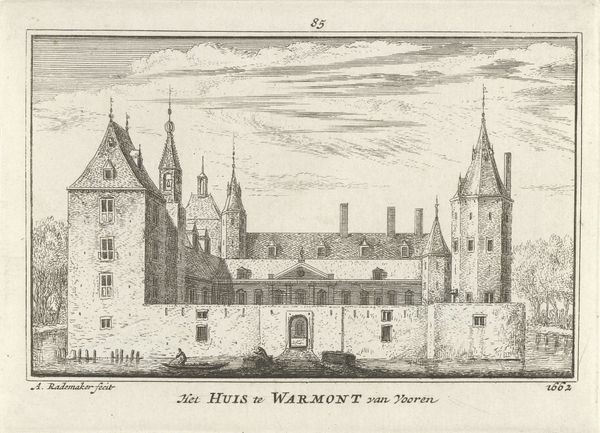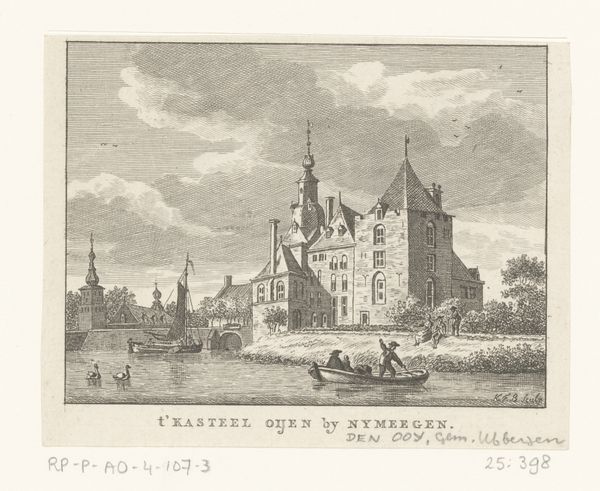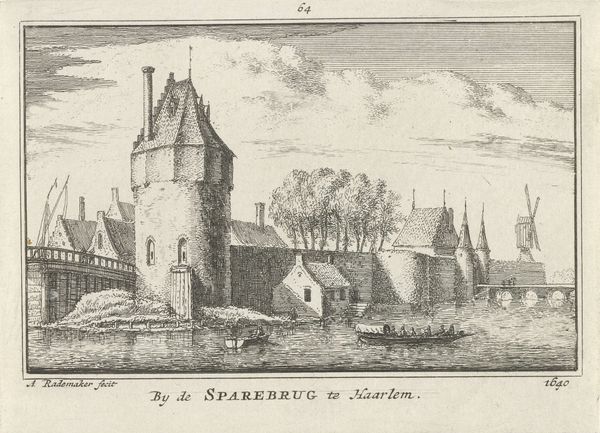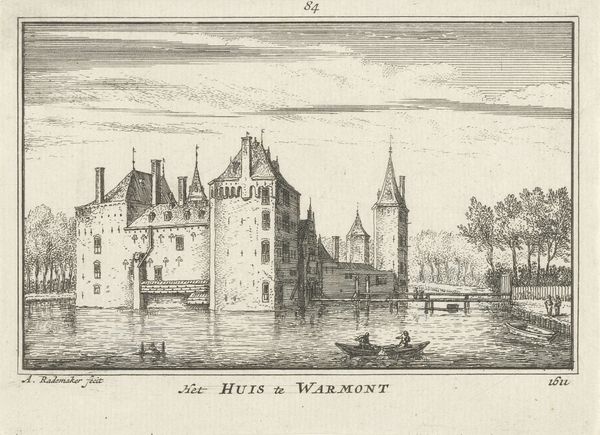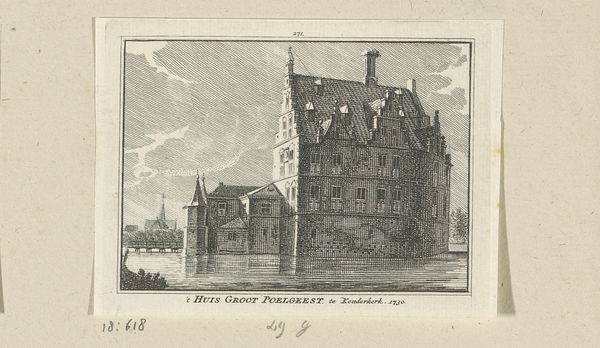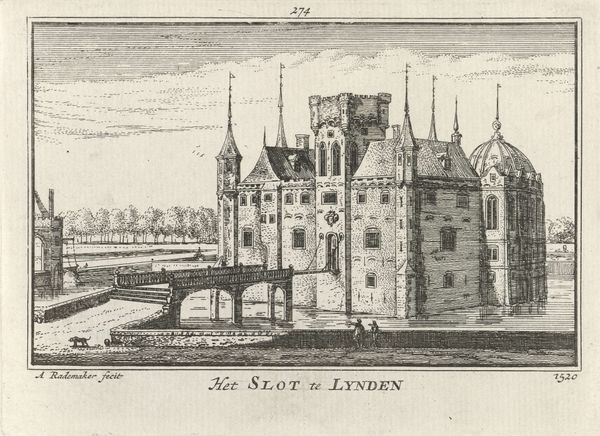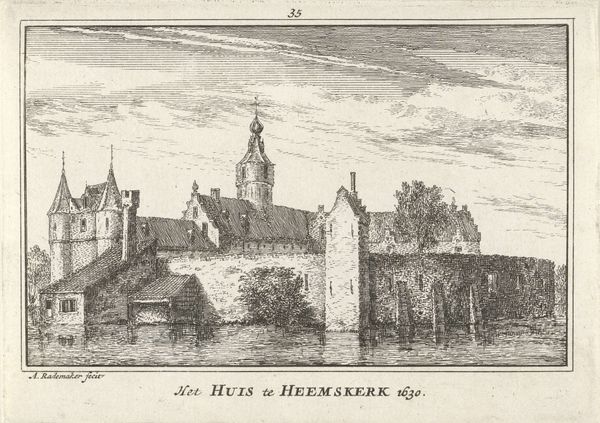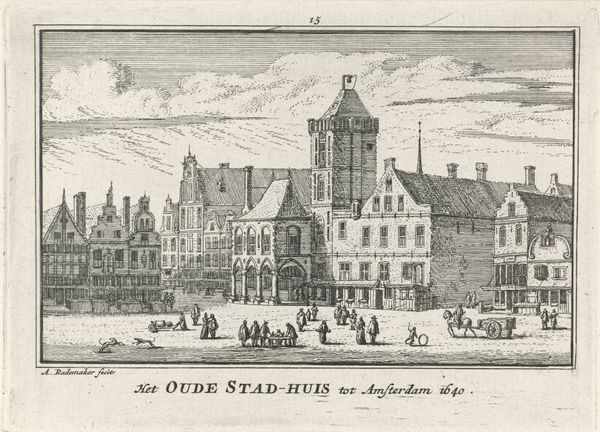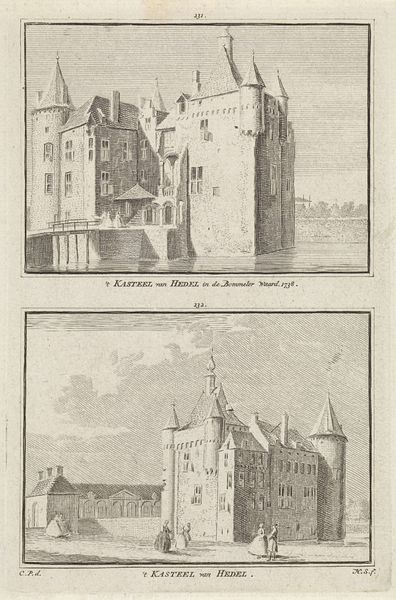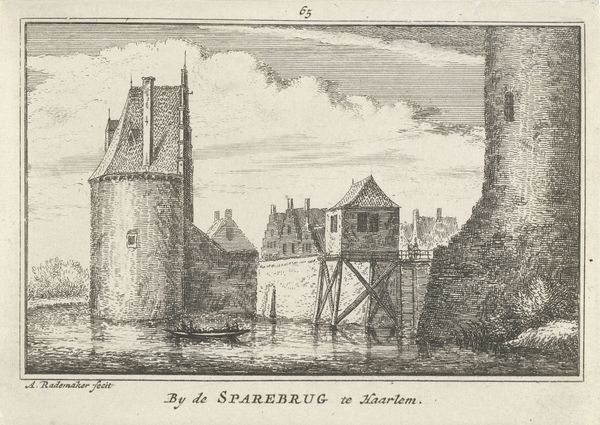
drawing, paper, engraving
#
drawing
#
dutch-golden-age
#
old engraving style
#
landscape
#
paper
#
engraving
Dimensions: height 80 mm, width 115 mm
Copyright: Rijks Museum: Open Domain
Curator: Abraham Rademaker rendered this image of Kasteel Hemmen between 1727 and 1733. Executed in pen, it’s presented in an engraving style on paper and resides here with us at the Rijksmuseum. Editor: What strikes me immediately is the density, almost a claustrophobia. All of these very detailed towers crowding together – I wonder what kind of power dynamic that reflects? Curator: Rademaker often documented castles and country estates, effectively providing a visual record of the Dutch landscape and aristocratic holdings. His work tells us about how these estates functioned within the Dutch Republic’s social fabric. Editor: I'm drawn to the boat on the water, too. Are they approaching, leaving? Is it purely decorative, or might it suggest an interrogation of accessibility? Who has the privilege of approaching or departing such a place, both literally and metaphorically? Curator: He created a window onto the Dutch Golden Age, documenting its architecture and social structures for both his contemporaries and posterity. Consider the rise of a merchant class. These weren't just inherited aristocratic piles; there's a negotiation with this new economic order playing out visually. Editor: Precisely. Looking closer, one observes some tiny figures walking the bridge – these details are fascinating because they show the intersection of power, labor and society within a single frame, while simultaneously asking, “Who is reflected and who is missing?” The composition feels like it has so much to reveal about hierarchy. Curator: Absolutely. The image participates in shaping a narrative around wealth, status, and ownership at a critical time in Dutch history. It’s less about aesthetics and more about visualizing a specific societal framework for a burgeoning public sphere. Editor: Studying this artwork provides a critical view on how visibility and representation have historically affected socio-political dialogues in our past and, naturally, the present, by analyzing the foundations. It leaves me to think what the work may also try to conceal from viewers now and then. Curator: An engraving like this one allows us to explore the construction and projection of power during a formative period in Dutch history, prompting us to look at the larger power structures that art supported.
Comments
No comments
Be the first to comment and join the conversation on the ultimate creative platform.
